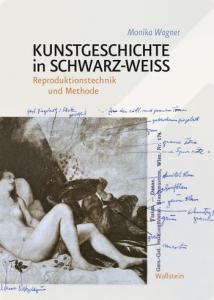Monika Wagner, Kunstgeschichte in Schwarz-Weiß. Reproduktionstechnik und Methode
Autour d’un livre
Monika Wagner, Kunstgeschichte in Schwarz-Weiß. Reproduktionstechnik und Methode
Autour d’un livre (II)
The author in conversation with Peter Geimer
Monika Wagner’s book Kunstgeschichte in Schwarz-Weiss. Reproduktionstechnik und Methode asks about the reasons for the rejection of colour reproductions in scholarly publications on the history of painting that lasted until the 1970s. In contrast, popular media had been featuring colour reproductions since the early 20th century. The academic ban on colour cannot only be attributed to technical shortcomings and higher costs of colour reproduction. Rather, for a long time there was no instrument for fixing and reproducing colour impressions. Monochrome photo reproductions, on the other hand, were able to tie in with graphic reproduction techniques and thus banish colour, which was suspected of being unscientific as a carrier of feelings and moods. The respective establishment of photo libraries with black-and-white reproductions at many institutes since the late 19th century had consequences for the development of central art-historical methods, first and foremost iconography. The debate here is how representatives of different art-historical methods – from Gottfried Semper to Svetlana Alpers – affected their relationship to colour and colour reproduction in their aesthetic theory.
Monika Wagner is professor emeritus of the University of Hamburg. Her work focuses on painting of the 18th-20th century, the history and theory of perception and the semantics of materials in art. Her book publications include: Marmor und Asphalt. Soziale Oberflächen im Berlin des 20. Jahrhunderts (Berlin 2018); William Turner (Munich 2011); Das Material der Kunst. Eine andere Geschichte der Moderne (Munich 2001).
Person in charge





